Berlin Trip
This year, EXA spent a weekend in Berlin as part of their annual study trip, much anticipated after the long travel restrictions of the past two years!
A vibrant and historic city, Germany’s capital is renowned for its symbolic post-industrial and modern landscape projects. With around one third of the city’s area composed of forests, parks, gardens, rivers and lakes, it made the perfect location to explore and be inspired how to integrate nature into urban areas. Being such a walkable city, we spent a lot of time on foot exploring a wide variety of landscapes: historic and modern, enormous parks to temporary parklets, from play spaces to commemorative memorials. With an extensive list of landscapes, here are some of our highlights.
Our first location was Tempelhofer Feld, a former military airfield. In 2010 this area was reopened to the public and the design kept the original layout of the airport. The bold decision to retain the vast open space, allowing it to develop organically and providing many recreational offerings for the public appeared to have been highly successful. We saw countless people picnicking and barbecuing, using the sports facilities, jogging, and freely cycling and skating on the repurposed runways.
Next, we headed to Park am Gleisdreieck, a railway junction left in ruins which was redeveloped into a park in 2013. One of the key design principles was to preserve the rich diversity of existing ruderal flora from the old railway. The combination of the post-industrial aesthetic and nature within a contemporary, functional park gives the park its unique character, enabling the park to thrive for both people and wildlife in an urban setting.
Previously celebrated as an iconic play feature, the seesaws in Tilla Durieux Park are reminiscent of the kindergarten playground that had previously existed there - albeit for a giant kindergarten, as these seesaws are constructed from 20 metre long bars and designed for groups of people, young and old alike. We learnt that the park became a major attraction, so much so that the seesaws were (unfortunately) bolted to prevent overcrowding. However it was still impressive to see play features being imagined at such a large scale, a frozen yet still somehow playful sculpture.
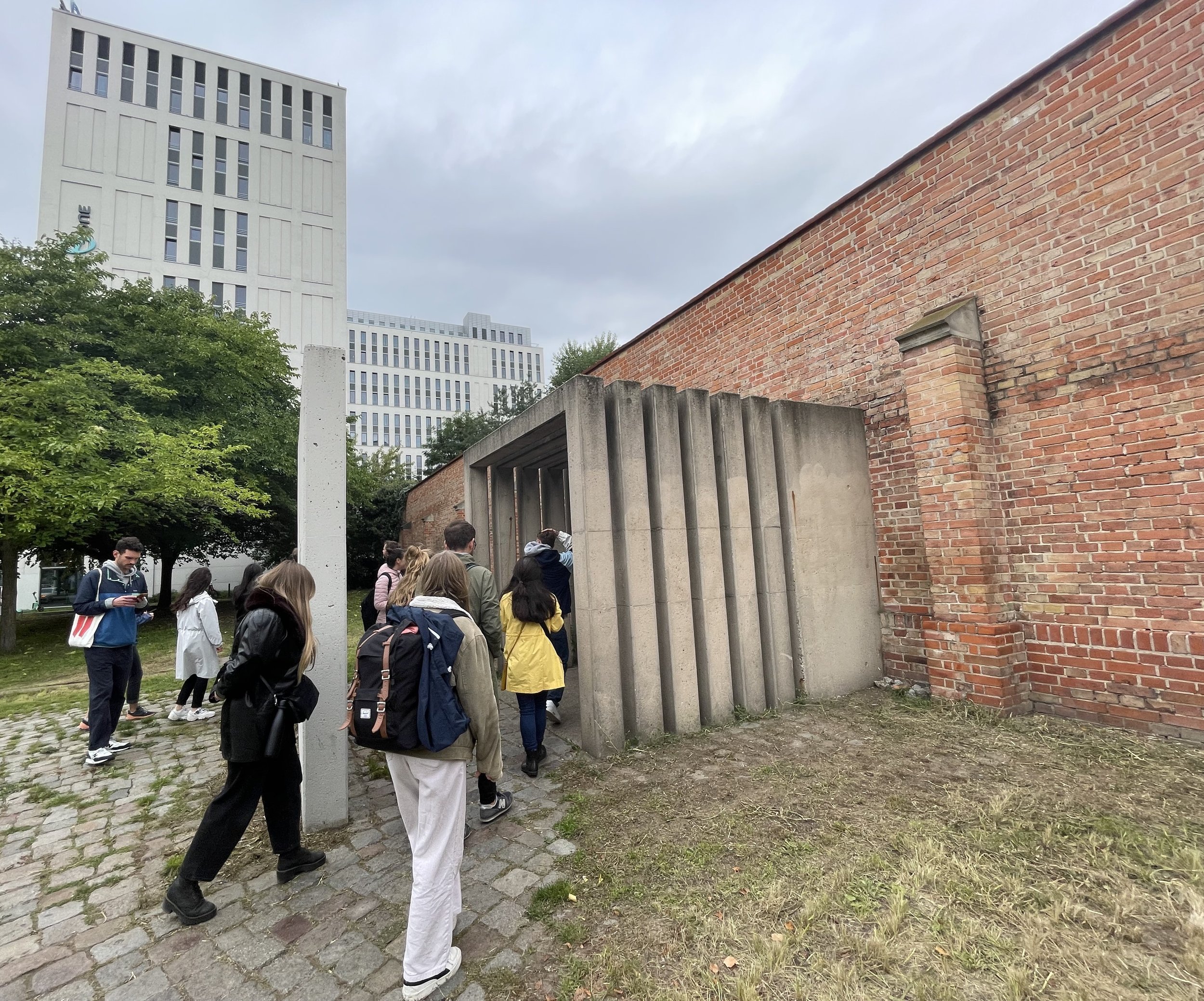
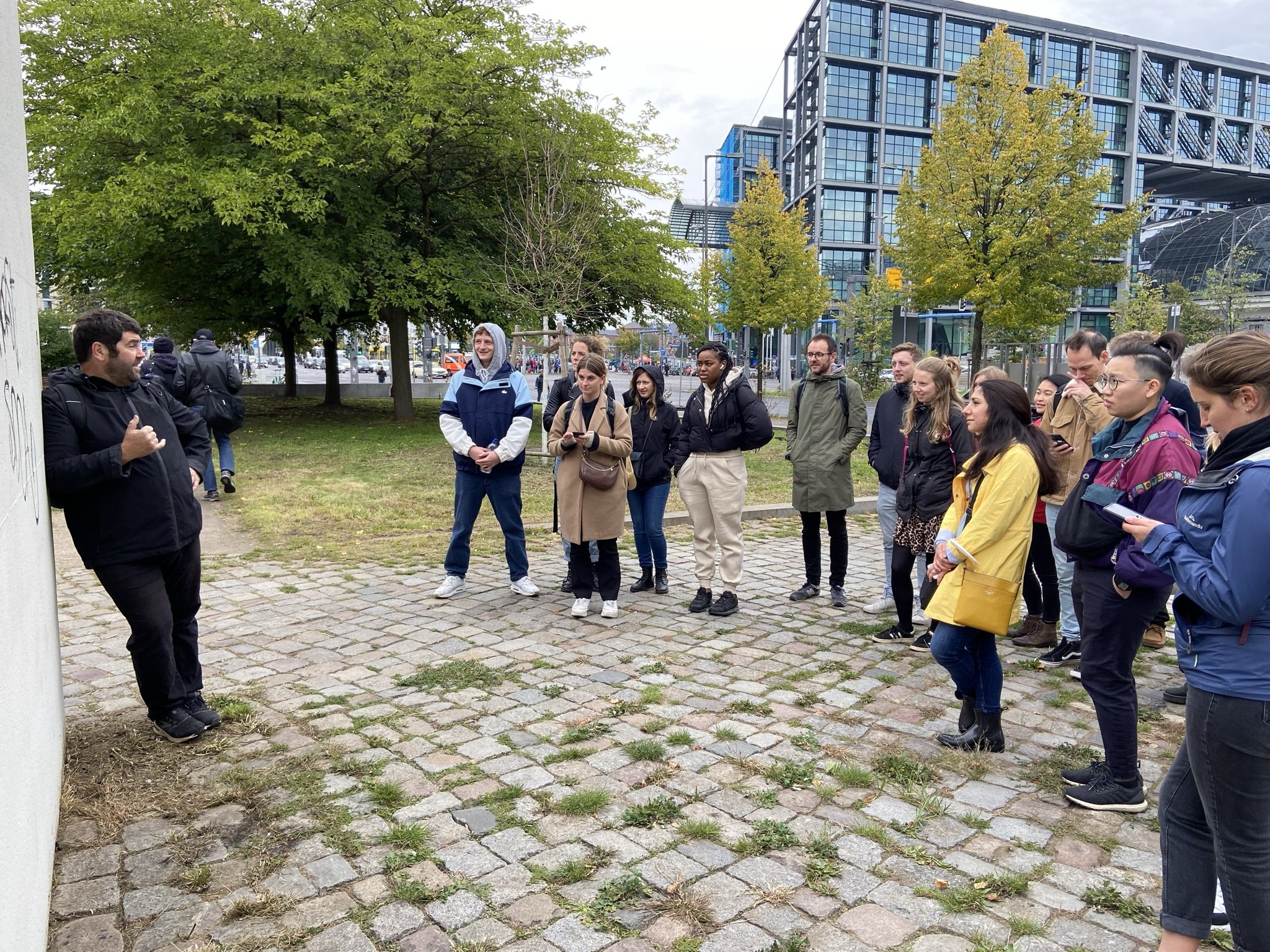
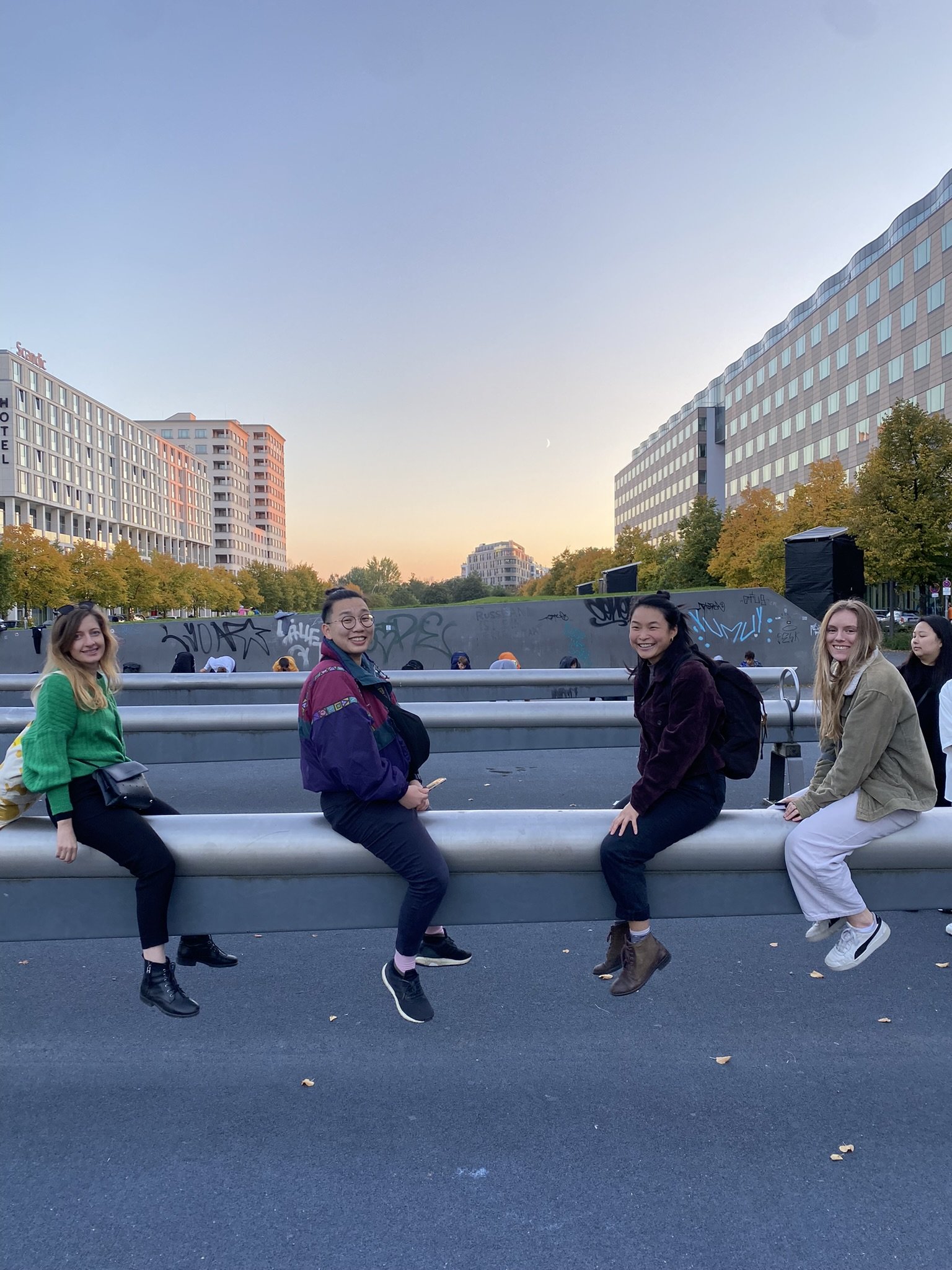
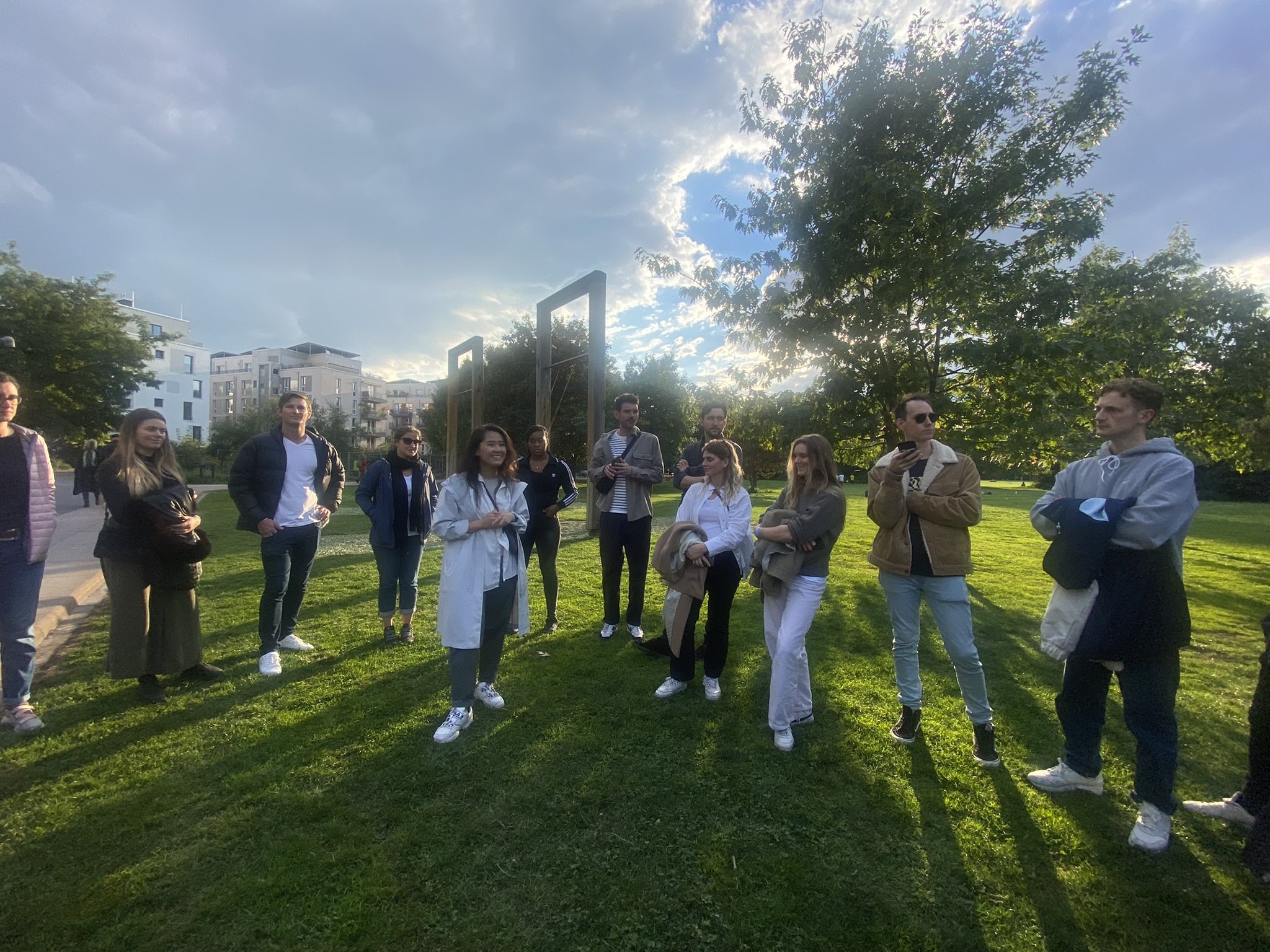
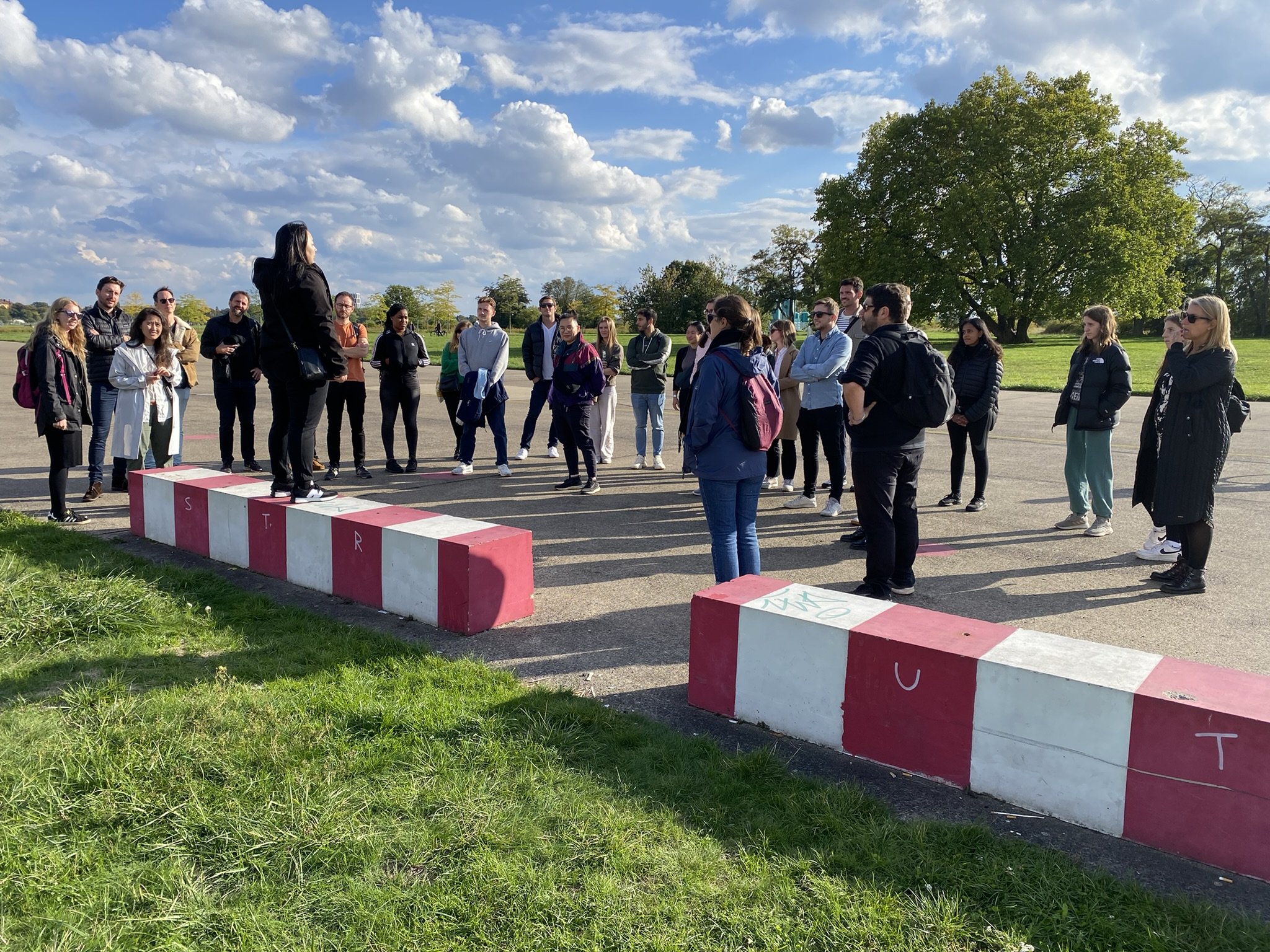
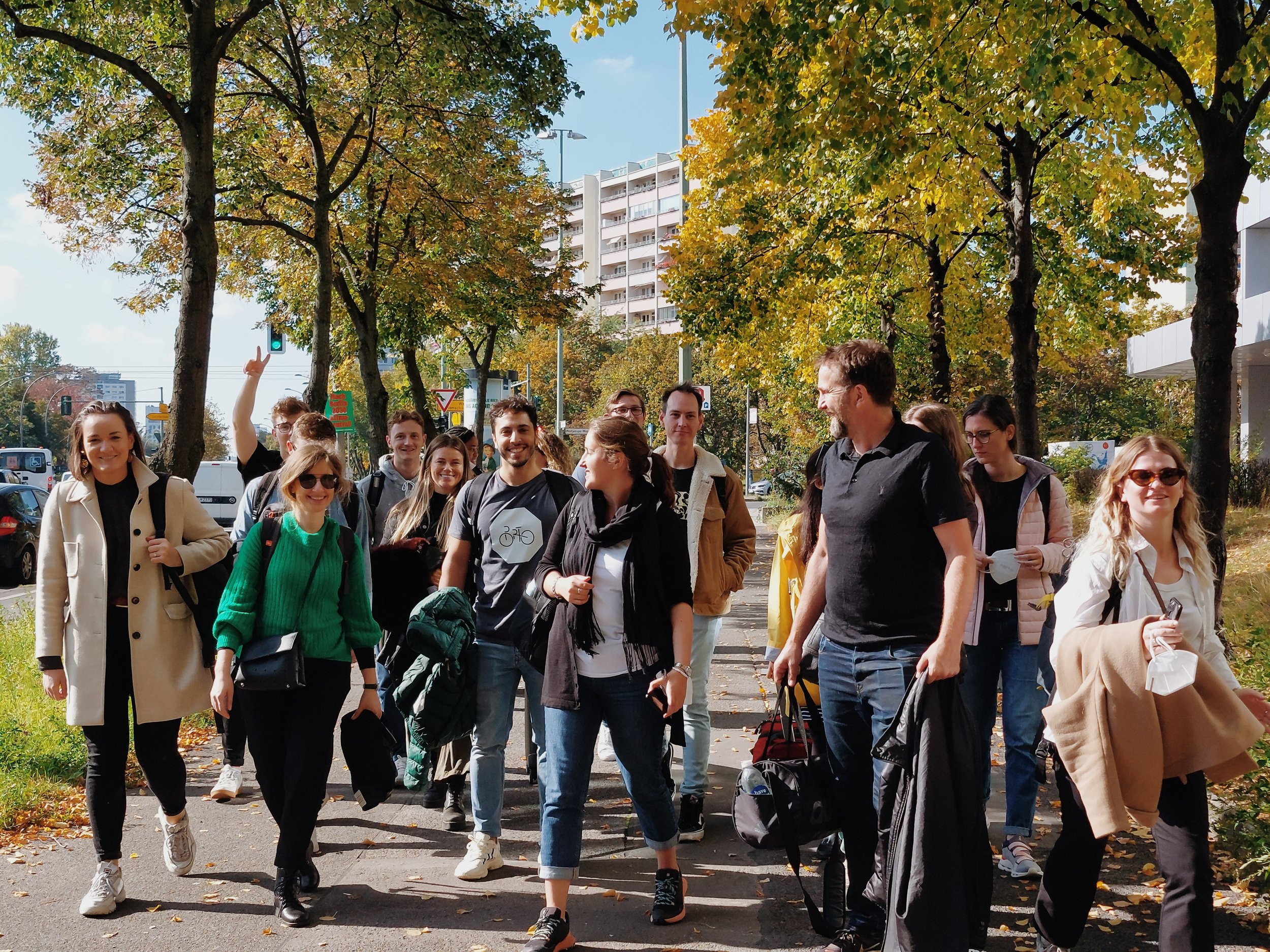
EXA’s executive director Leighton took us to a project he had previously worked on, having lived in Berlin before, called Geschichtspark Ehemaliges. This site used to have a prison and is now a park memorialising its previous functions. The prison informed the design language, which is why the park’s layout is centered around the five wings of the building, which are now expressed through the topography. The park was designed for recreation but subtly echoes its past by memorialising certain aspects of the prison’s architecture- the walls, a replica a courtyard and original cell.
Overall it was fascinating to see the transformation that Berlin had undergone in the context of its turbulent history. We were able to witness and appreciate how landscape and urban designers had discerningly retained elements of the past, while looking to the future to build a socially cohesive city landscape.
